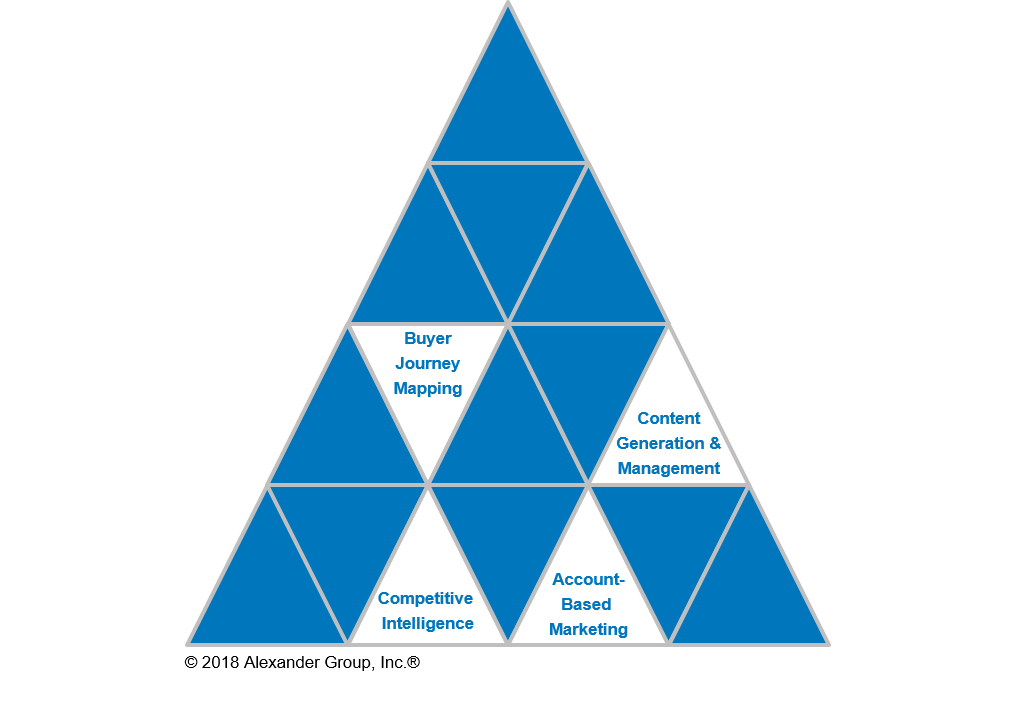Medical Device Marketing Transformation: Filling the Sales-Marketing Gaps

In today’s medtech industry, it is critical for sales and marketing to align on go-to-market strategy, as well as the day-to-day activities required to successfully execute this strategy. Often times this is easier said than done as strategy evolves, new priorities arise, reorganizations uproot existing team structures…the list goes on and on. Nevertheless, commercial leaders must strive for maximum alignment between sales and marketing. We have identified three primary gaps or challenges that exist for many of today’s medtech marketing organizations. These include:
- Balancing product expertise with customer centricity
- Lack of clarity around marketing roles, responsibilities and rules of engagement with sales
- Limited rigor around key marketing processes
A recent case study with one division of a global medical device manufacturer highlighted each of these gaps. The Alexander Group (AGI) assisted the company’s sellers in a sales transformation from a multi-siloed, product-centric structure to a more consolidated, customer-centric view. Though this sales transformation was producing strong results, leadership believed other functions in the commercial organization─namely marketing─were not appropriately structured and staffed to maintain the desired growth rates. AGI partnered with the head of marketing to embark on a marketing transformation initiative.
To begin, AGI assessed the marketing organization and discovered:
The marketing team’s product-siloed reporting structure created misalignment with both the sales organization and customers. There was no clear owner of customer-specific strategy, intelligence or accountability. Though the marketing team needed to remain product experts, they also needed guidance to become more customer-centric.
There was a lack of job clarity among the team. Marketing specialists were over-burdened with gathering market intelligence, defining sales strategy, product support, product training, performance analysis and reporting, RFP response, supply chain management, to name a few. The employees were not properly executing the external commercial resources because there was no solid process in place.
A lack of well-defined marketing processes resulted in major inefficiencies and an over-reactive, stressful work environment.
All of these factors resulted in core, fundamental marketing responsibilities going ignored, most notably:
Finally, AGI worked with the marketing leadership to design a new organizational structure with four functional families:
- Market/customer segment strategy
- Product management
- Content generation
- Demand generation
This structure created greater specialization and a narrower job focus for both management and employees. There were now clear owners of underserved responsibilities, such as content development and account-based marketing execution.
AGI also developed detailed process maps for key marketing activities (e.g., RFP response, sales training, deal approval) to better clarify roles and responsibilities tied to foundational marketing activities. Lastly, AGI developed playbooks to assist with rollout and communication of the new organization.
Are your marketing and sales teams experiencing these key gaps? Let the Alexander Group’s expert revenue growth leaders assist in developing your roadmap to success.
